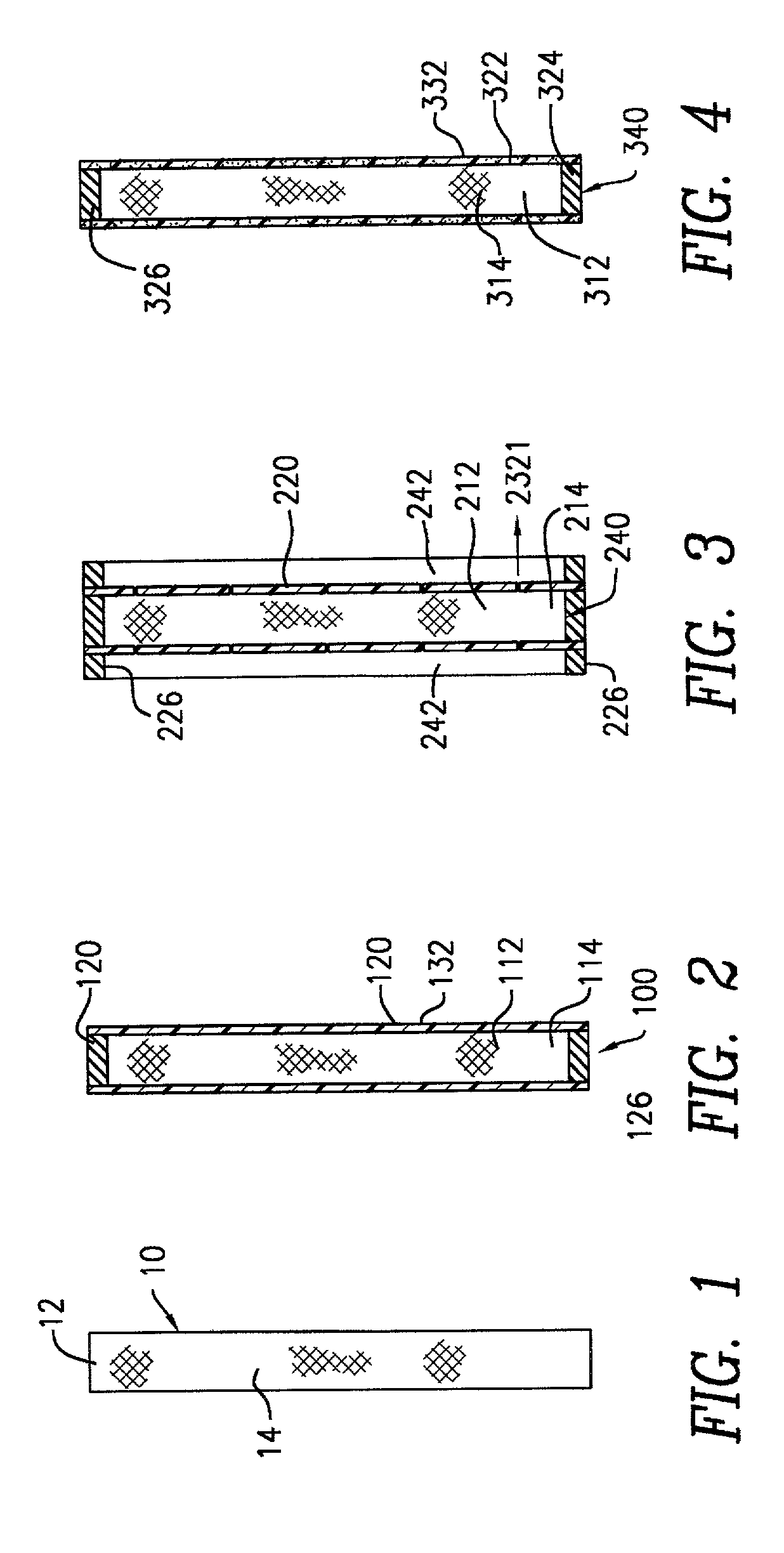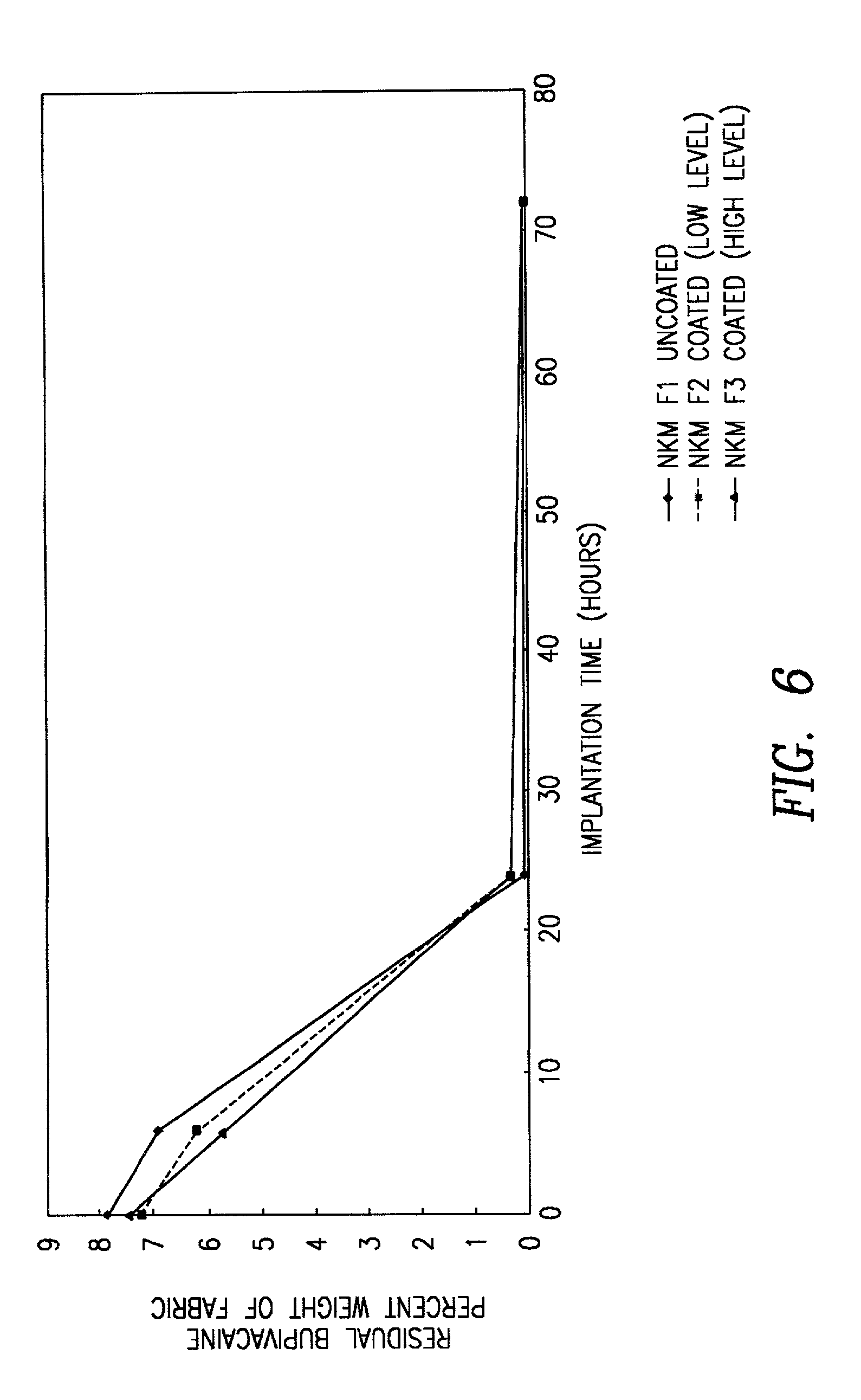Bio-compatible means for controlled drug delivery to tissue and method of use
a biocompatible and tissue technology, applied in the direction of pharmaceutical delivery mechanism, organic active ingredients, bandages, etc., can solve the problems of not disclosing the combination of a bioactive agent with orc and a biodegradable polymer, not disclosing the sustained or controlled release and/or delivery of a bioactive material, and not disclosing the controlled or sustained release of a pharmacologically active agen
- Summary
- Abstract
- Description
- Claims
- Application Information
AI Technical Summary
Problems solved by technology
Method used
Image
Examples
example 2
[0040] In accordance with the procedures of Example 1, there may be prepared composites of the structure of NKD2 and / or NKD3, wherein the perforations are microporous perforations in the range of 0.01-100 microns in diameter. In additional, in place of bupivacaine, there may be utilized any tissue compatible bio-active agent, including, but not limited to, analgesics, antibiotics, antimicrobials, antivirals, antiinflamatory agents, anticholinergics, antidepressants, antihistamines, antidiabetics, anticonvulsants, antimigranes, antineoplastics, antimalerials, immunisuppressants, cardiovascular drugs, anti-adhesive agents, vasoconstrictors, growth factors (PDGF), and hemostatic agents, suitably, gentamicin, ofloxacin, silver, verapamil miconazole, ketoconazole, taxol, vincristine and vinblastine.
[0041] In addition, a sample listing of suitable pharmaceutically active agents is set forth in U.S. Pat. No. 6,255,502, which is hereby incorporated herein by reference.
[0042] In place of PLA...
example 3
[0044] Dip coating of ORC / Bupivacaine Matrix
[0045] A matrix of NKD1 was coated with a mixture of PLA and PLG by dipping the matrix into a solution containing 5 and 50 wt % of the polymers dissolved inethyl acetate or methylene chloride. The product was then air dried and tested in vitro in accordance with the procedures of Example 4 below. The in vivo test results are shown in FIG. 6. It is noted that there was no substantial difference in the release time and amount, between the uncoated NKD1 and the corresponding dip coated samples.
example 4
Determination of Bupivacaine (Marcaine) Release from ORC-Matrix
[0046] The ORC-active agent combinations of example 2 and 3 can be suspended in neutral buffers at pH 7.4 at 37.degree. C. to simulate body conditions for the purpose of studying the release of the drug in the buffer (in vitro). The test samples released Marcaine in the buffer while degrading. The ORC matrix is expected to degrade completely in 3-5 days if needed, degradation can be accelerated (terminal samples) by adding sodium bicarbonate base to the buffer solution.
[0047] More particularly, for example, water bath is pre-heated to 37.degree. C. Test samples of the ORC-Marcaine are cut into small pieces and the samples (in the range of 0.05g-01 g) are weighed and placed in labeled vials. The desired amount of buffer (e.g., 100, 50, 25 or 10 times, by weight, of the test sample) is added. For terminal samples, sufficient sodium bicarbonate is added to make a 0.15 M solution. The vials are placed in the pre-heated water...
PUM
| Property | Measurement | Unit |
|---|---|---|
| Pore size | aaaaa | aaaaa |
| Pore size | aaaaa | aaaaa |
| Pore size | aaaaa | aaaaa |
Abstract
Description
Claims
Application Information
 Login to View More
Login to View More - R&D
- Intellectual Property
- Life Sciences
- Materials
- Tech Scout
- Unparalleled Data Quality
- Higher Quality Content
- 60% Fewer Hallucinations
Browse by: Latest US Patents, China's latest patents, Technical Efficacy Thesaurus, Application Domain, Technology Topic, Popular Technical Reports.
© 2025 PatSnap. All rights reserved.Legal|Privacy policy|Modern Slavery Act Transparency Statement|Sitemap|About US| Contact US: help@patsnap.com



